Table of Contents
ToggleMontessori and Baby-Led Potty Training: A Gentle Approach
Are you tired of the stress and frustration that often comes with traditional potty training methods? Have you ever wondered if there’s a gentler, more intuitive way to help your child navigate this important milestone?
As parents, we’re bombarded with conflicting advice and pressure to have our children potty trained by a certain age. But what if I told you that there’s a different approach—one rooted in respect for your child’s autonomy and natural development?
Let’s face it: potty training can be daunting. From navigating accidents to managing resistance from your little one, it’s easy to feel overwhelmed by the process. But what if I told you that there’s a way to make potty training not only easier but also more enjoyable for both you and your child?
That’s where Montessori and baby-led potty training come in. These gentle, child-centered approaches prioritize your child’s cues and instincts, fostering a sense of independence and empowerment from the start.
In this article, we’ll explore the principles of Montessori and baby-led potty training and how they can transform your potty training journey from a source of stress to a source of joy and connection with your child.
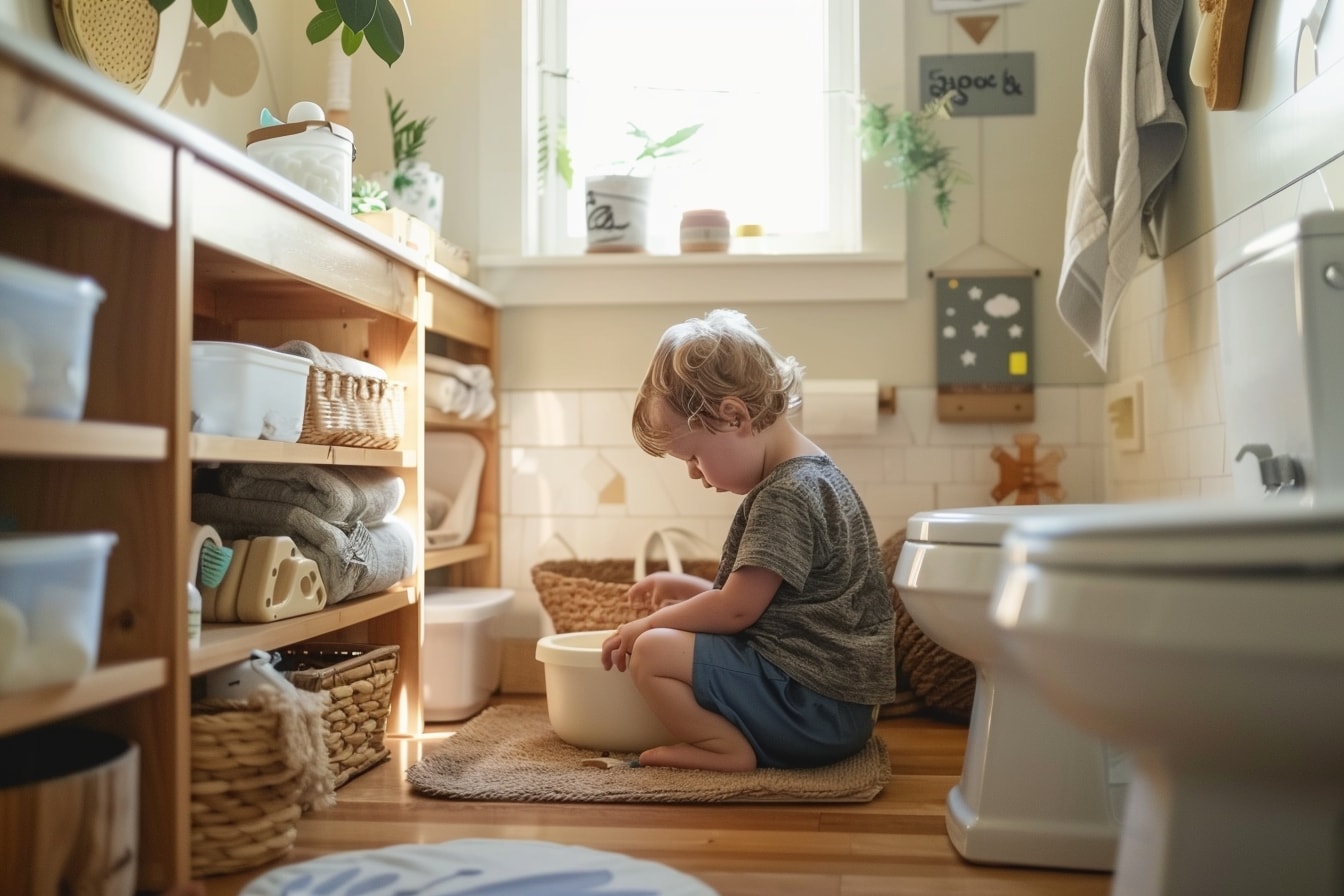
Understanding Montessori Principles in Potty Training
Montessori principles are grounded in the belief that children are capable, competent individuals who learn best through hands-on experiences and independent exploration. When it comes to potty training, these principles can be incredibly empowering for both parents and children.
One of the key tenets of Montessori philosophy is the importance of creating a prepared environment that supports a child’s natural development. In the context of potty training, this means setting up a potty training area that is accessible, comfortable, and inviting for your child.
Think about incorporating child-sized potties or toilet inserts that allow your child to independently use the toilet without assistance. Place the potty in a quiet, private area of the house where your child feels safe and secure.
Another fundamental aspect of Montessori philosophy is the idea of following the child’s lead. Instead of imposing a strict potty training schedule or forcing your child to sit on the potty at designated times, Montessori encourages parents to observe their child’s natural rhythms and cues.
Watch for signs that your child may need to use the potty, such as squirming, holding their genitals, or pausing their play. When you notice these cues, gently guide your child to the potty and offer encouragement and support as they learn to use it independently.
Montessori also emphasizes the importance of fostering independence and self-confidence in children. When it comes to potty training, this means giving your child the freedom to take ownership of the process and make choices for themselves.
Encourage your child to participate in all aspects of potty training, from choosing their own underwear to helping clean up any accidents that may occur. By empowering your child to take an active role in the process, you’re helping them develop important life skills and building their confidence along the way.
Overall, Montessori principles provide a holistic framework for approaching potty training with respect, patience, and trust in your child’s abilities. By creating a supportive environment, following your child’s lead, and fostering independence, you can make the potty training journey a positive and empowering experience for both you and your child.
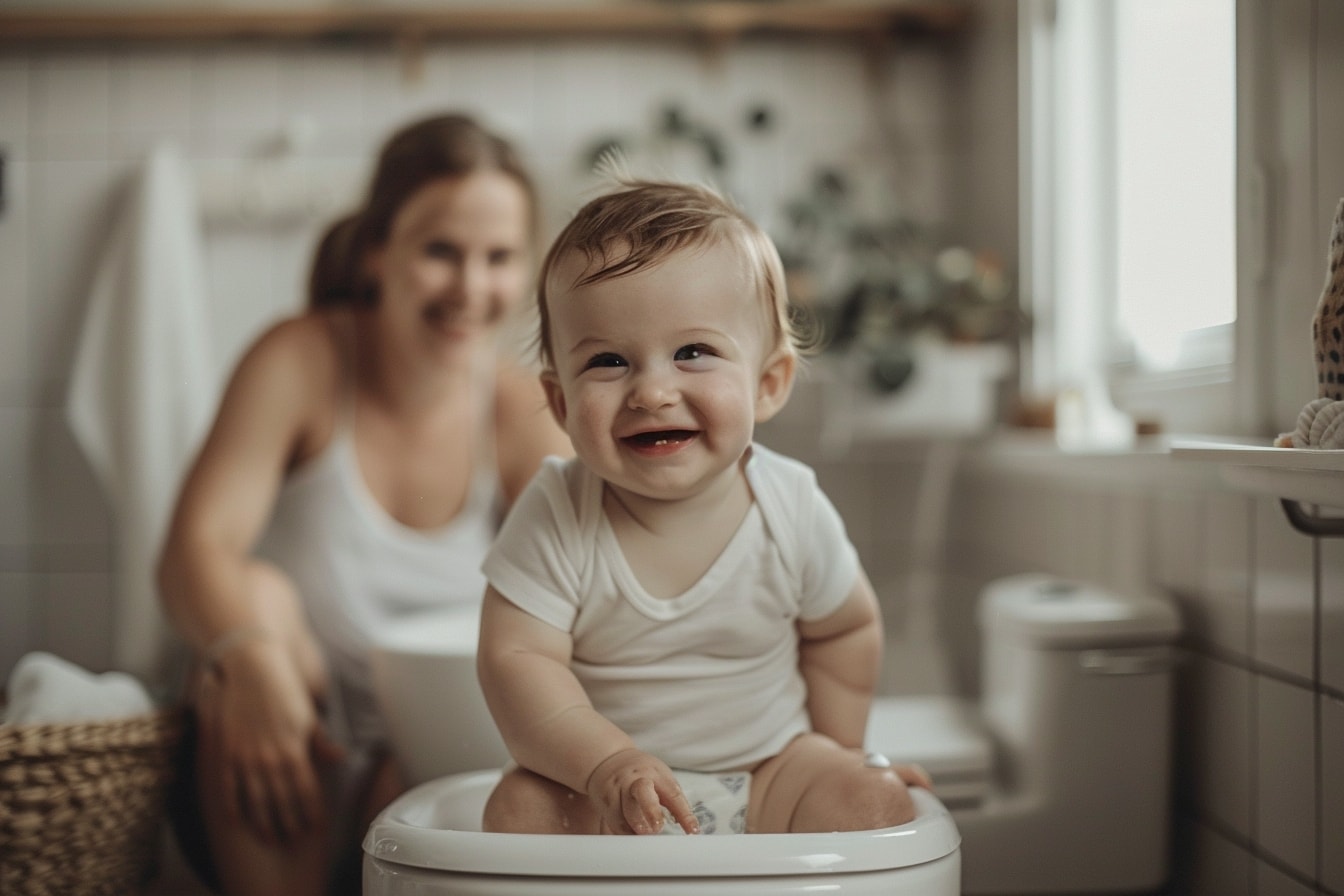
Baby-Led Potty Training: Trusting Your Child’s Signals
One of the most beautiful aspects of baby-led potty training is the emphasis on trusting your child’s natural cues and instincts. Rather than imposing a rigid schedule or method, baby-led potty training empowers parents to tune into their child’s signals and respond to their needs with sensitivity and respect.
At its core, baby-led potty training is about honoring your child’s autonomy and trusting that they are capable of communicating their needs, even from a young age. This approach recognizes that every child is unique and may progress through the potty training process at their own pace.
So, how do you know when your child is ready for baby-led potty training? The key is to pay attention to your child’s body language and behavior. Look for signs that they may need to use the potty, such as squatting, grunting, or suddenly stopping what they’re doing.
- Observe your child during diaper changes or after meals, when they may be more likely to need to use the potty.
- Watch for cues that your child is becoming aware of their bodily functions, such as pulling at their diaper or expressing discomfort when wet or soiled.
- Keep an eye out for patterns in your child’s behavior, such as consistently waking up dry from naps or showing interest in the bathroom when you or other family members use it.
Once you’ve identified your child’s signals, the next step is to respond to them in a supportive and encouraging manner. When your child shows signs of needing to use the potty, offer gentle guidance and reassurance as they navigate this new experience.
Remember that accidents are a natural part of the learning process and should be met with patience and understanding. Avoid scolding or shaming your child for accidents, as this can undermine their confidence and create negative associations with potty training.
Instead, focus on celebrating your child’s successes and offering praise and encouragement for their efforts. Let them know that you’re proud of them for trying, regardless of the outcome.
By trusting your child’s signals and supporting them with love and patience, you can create a positive and empowering potty training experience that sets the stage for success in the years to come.
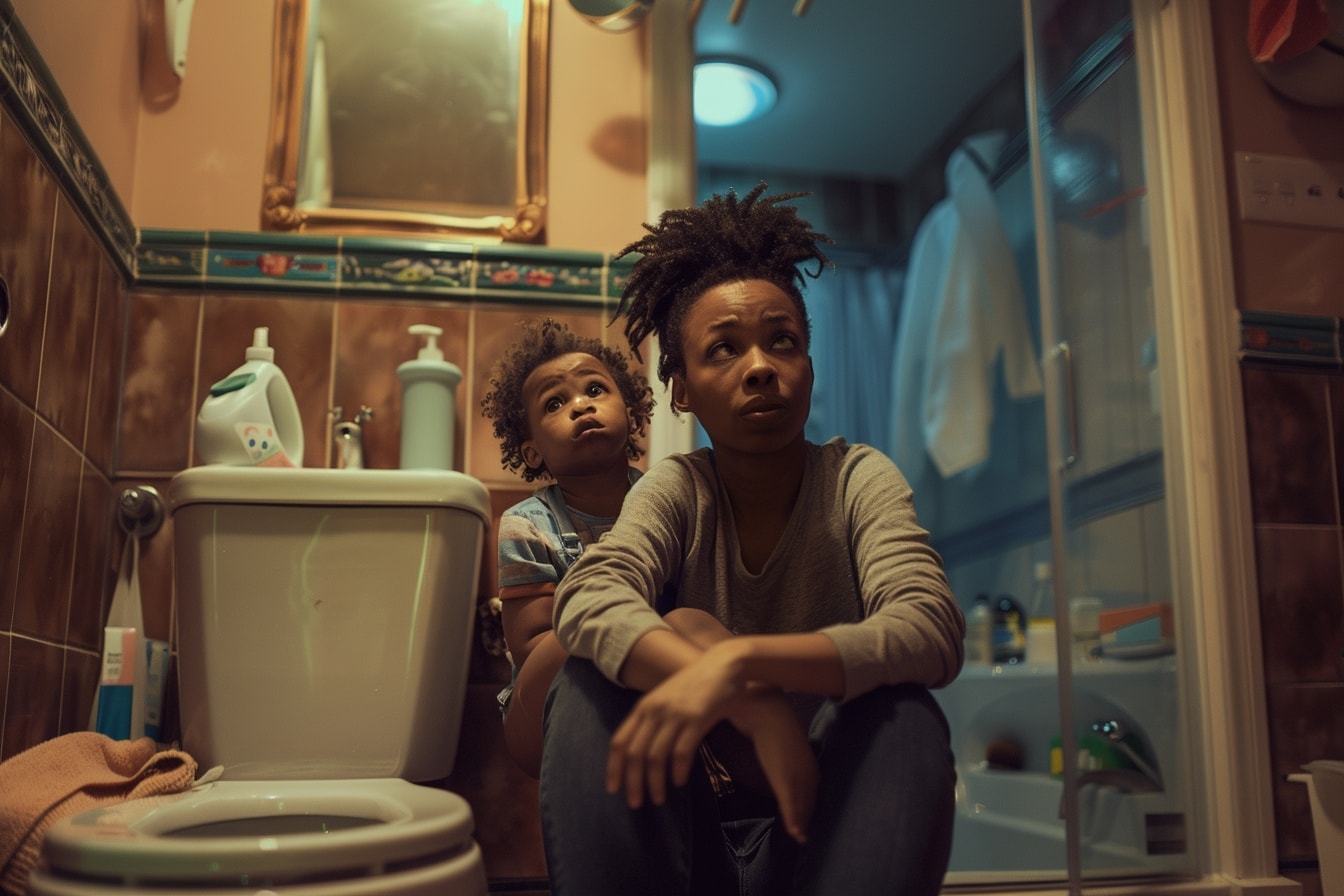
Challenges and Solutions
While Montessori and baby-led potty training can offer many benefits, it’s important to acknowledge that it’s not without its challenges. From resistance from your child to setbacks in progress, there may be times when you feel frustrated or unsure of how to proceed. However, with patience, creativity, and a willingness to adapt, you can overcome these challenges and continue moving forward on your potty training journey.
One common challenge parents may face is resistance from their child. Your little one may be hesitant or even outright refuse to use the potty, preferring the comfort and familiarity of their diapers. This resistance can be frustrating, but it’s important to approach it with empathy and understanding.
- Try to identify the root cause of your child’s resistance. Are they feeling anxious or overwhelmed by the potty training process? Are they asserting their independence in other areas of their life?
- Offer reassurance and encouragement, letting your child know that it’s okay to take things at their own pace. Avoid pressuring or forcing them to use the potty, as this can create negative associations and hinder their progress.
- Consider introducing incentives or rewards to motivate your child and make potty training feel more fun and exciting. This could be as simple as a sticker chart or special treat for successful trips to the potty.
Another challenge parents may encounter is dealing with accidents. Despite your best efforts, accidents are a normal part of the potty training process and should be expected, especially in the early stages.
- Stay calm and composed when accidents happen, avoiding any negative reactions that may make your child feel ashamed or embarrassed.
- Use accidents as teachable moments, gently guiding your child through the cleanup process and discussing what happened without placing blame or judgment.
- Offer plenty of praise and encouragement when your child successfully uses the potty, reinforcing positive behavior and building their confidence over time.
Finally, many parents struggle with maintaining consistency and perseverance throughout the potty training process. It’s easy to feel discouraged when progress seems slow or when setbacks occur, but it’s important to stay committed to your goals and trust in the process.
- Set realistic expectations for your child’s potty training journey, recognizing that every child is unique and may progress at their own pace.
- Stay consistent with your approach, establishing routines and rituals that support your child’s potty training efforts.
- Seek support from other parents or professionals who have experience with Montessori and baby-led potty training, sharing your challenges and successes with a supportive community.
By acknowledging and addressing these challenges head-on, you can navigate the ups and downs of potty training with confidence and grace, creating a positive and empowering experience for both you and your child.
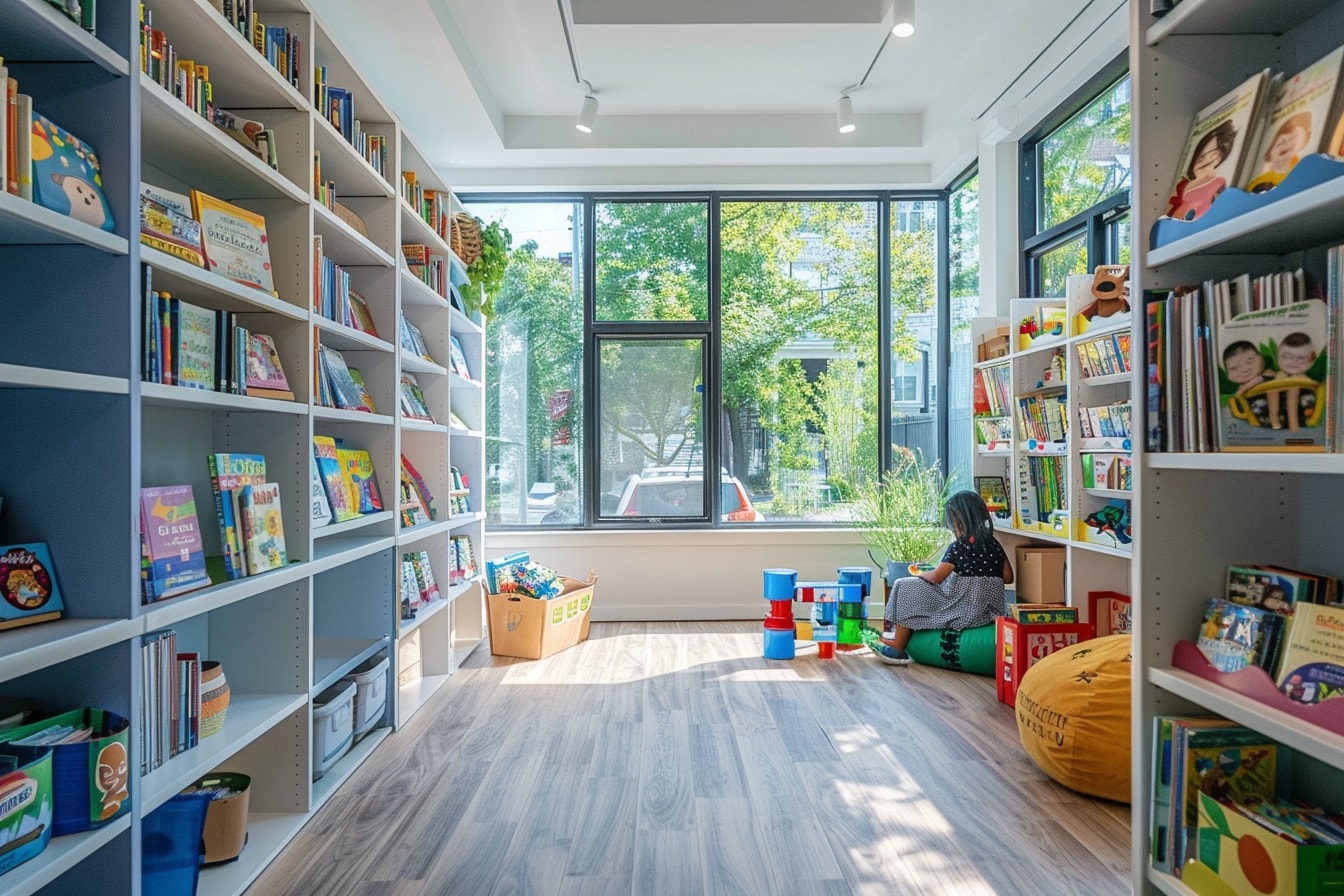
Current Trends and Research
As we delve into the world of Montessori and baby-led potty training, it’s important to stay abreast of the latest trends and research shaping the field. From innovative techniques to groundbreaking studies, there’s a wealth of information available to help parents navigate the potty training journey with confidence and success.
One emerging trend in the world of potty training is the use of technology to support parents and children in the process. From potty training apps to interactive books and videos, there are countless resources available to help make potty training fun, engaging, and educational for both parents and children.
- Explore the latest potty training apps that offer interactive games, rewards systems, and progress tracking to keep children motivated and engaged.
- Check out educational books and videos that introduce children to the concept of potty training in a fun and age-appropriate way, helping to demystify the process and alleviate any anxiety or fear they may have.
- Consider incorporating technology into your potty training routine, using timers, reminders, and visual aids to help children remember to use the potty regularly and independently.
Another trend gaining traction in the world of potty training is the use of eco-friendly and sustainable products. As parents become more environmentally conscious, there’s a growing demand for potty training solutions that are not only effective but also eco-friendly and gentle on the planet.
- Explore eco-friendly diaper alternatives, such as cloth diapers or biodegradable training pants, that minimize waste and reduce your carbon footprint.
- Investigate sustainable potty training accessories, such as bamboo toilet inserts or recycled plastic potties, that are made from renewable materials and free from harmful chemicals.
- Consider incorporating eco-friendly practices into your potty training routine, such as using reusable wipes or practicing diaper-free time to reduce your overall impact on the environment.
On the research front, there’s a growing body of evidence supporting the effectiveness of Montessori and baby-led potty training approaches. Studies have shown that these gentle, child-centered methods can lead to faster and more successful potty training outcomes, as well as long-term benefits for children’s emotional and psychological well-being.
- Explore recent studies that have examined the impact of Montessori and baby-led potty training on children’s development, behavior, and self-esteem.
- Read up on the latest research findings that highlight the advantages of following your child’s cues and instincts in the potty training process, including reduced stress and anxiety for both parents and children.
- Consider incorporating evidence-based practices into your potty training routine, using research-backed strategies and techniques to optimize your child’s chances of success.
By staying informed about current trends and research in the field of potty training, you can make informed decisions and tailor your approach to best meet your child’s needs and preferences. Remember, every child is unique, so don’t be afraid to experiment and find what works best for you and your family.
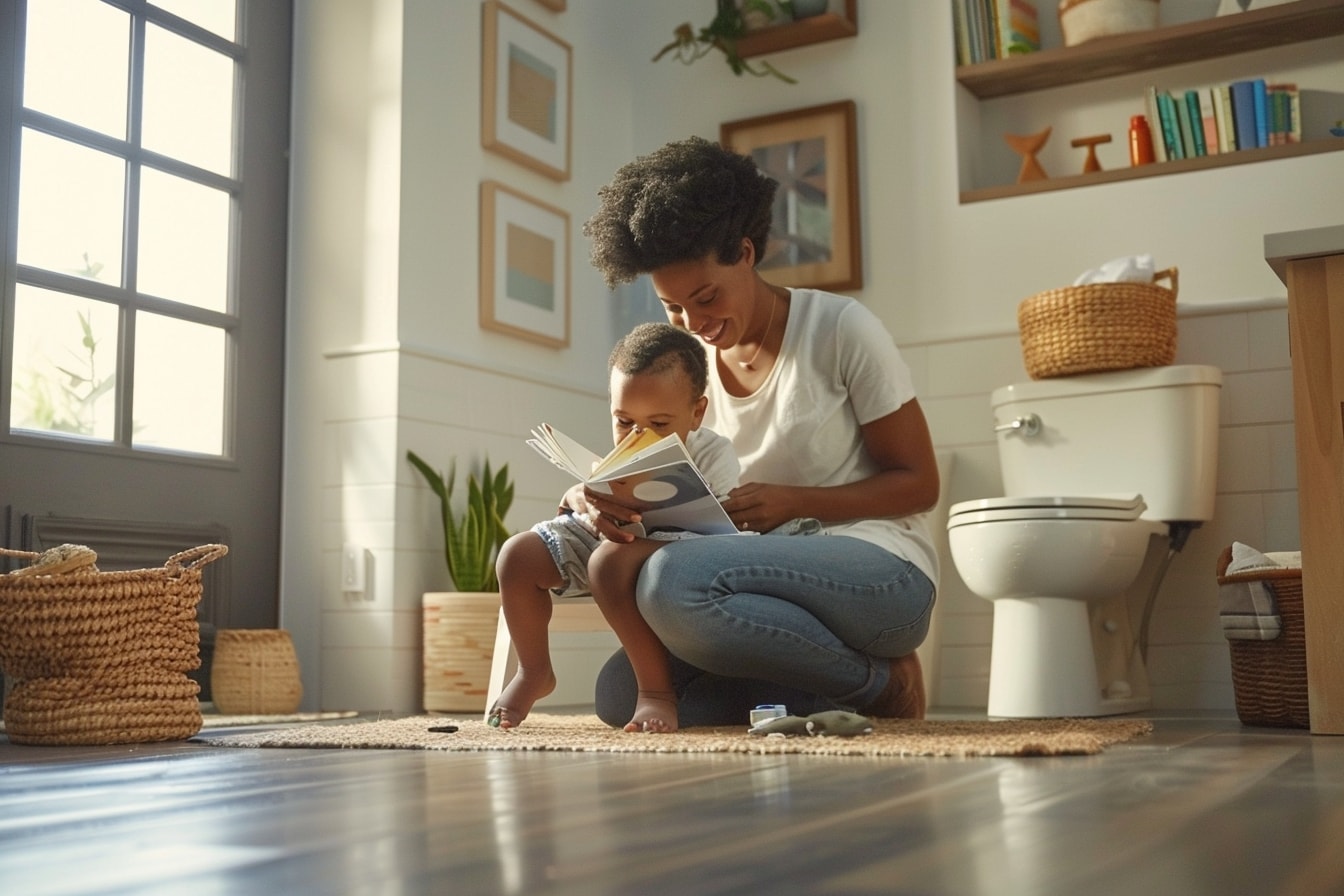
Practical Implementation and Support
Now that we’ve explored the principles and trends surrounding Montessori and baby-led potty training, let’s dive into the practical aspects of implementing these approaches in your own home. From setting up a potty training-friendly environment to finding support and resources along the way, there are many steps you can take to make the potty training journey a positive and empowering experience for both you and your child.
The first step in practical implementation is creating a potty training-friendly environment that supports your child’s independence and autonomy. This means setting up a designated potty training area that is easily accessible and inviting for your child.
- Consider placing a child-sized potty or toilet insert in a quiet, private area of the house where your child feels comfortable and secure.
- Stock the potty training area with all the essentials, including wipes, extra underwear, and a step stool for easy access to the toilet.
- Make the potty training area visually appealing and engaging for your child, using colorful decorations or stickers to create a fun and inviting space.
Once you’ve established a potty training-friendly environment, the next step is to provide your child with the support and encouragement they need to succeed. This means being patient, understanding, and responsive to your child’s cues and needs.
- Offer praise and encouragement whenever your child uses the potty successfully, celebrating their achievements and milestones along the way.
- Be patient and understanding when accidents happen, refraining from scolding or shaming your child for mistakes.
- Provide gentle guidance and reassurance as your child learns to navigate the potty training process, offering support and encouragement every step of the way.
In addition to providing hands-on support, it’s also important to seek out resources and support networks that can help you navigate the potty training journey with confidence and success. Whether it’s books, websites, or online communities, there are many resources available to help parents learn more about Montessori and baby-led potty training and connect with others who are going through the same experience.
- Explore potty training books and websites that offer practical tips, strategies, and advice for parents navigating the potty training journey.
- Join online communities or support groups where you can connect with other parents who are also practicing Montessori and baby-led potty training, sharing experiences, advice, and encouragement along the way.
- Consider seeking out professional support from a pediatrician, child psychologist, or potty training consultant who can offer personalized guidance and support tailored to your child’s unique needs and circumstances.
By creating a potty training-friendly environment, providing your child with the support and encouragement they need, and seeking out resources and support networks, you can make the potty training journey a positive and empowering experience for both you and your child. Remember, every child is unique, so don’t be afraid to experiment and find what works best for you and your family.
As we come to the end of our exploration into Montessori and baby-led potty training, it’s clear that these gentle, child-centered approaches have the power to transform the potty training journey from a source of stress to a source of joy and connection with your child. By embracing the principles of Montessori education and trusting in your child’s natural instincts, you can create a positive and empowering experience that sets the stage for success in the years to come.
Throughout this article, we’ve delved into the core principles of Montessori and baby-led potty training, exploring how they prioritize your child’s autonomy, independence, and emotional well-being. We’ve discussed the importance of creating a supportive environment that fosters your child’s confidence and self-esteem, as well as the value of tuning into your child’s cues and responding to their needs with patience and understanding.
We’ve also examined some of the common challenges parents may face during the potty training process, offering practical solutions and strategies for overcoming these obstacles with grace and resilience. From dealing with resistance and accidents to maintaining consistency and perseverance, we’ve highlighted the importance of staying committed to your goals and trusting in the process, even when the going gets tough.
And finally, we’ve explored some of the latest trends and research shaping the field of potty training, from the use of technology to support parents and children in the process to the growing demand for eco-friendly and sustainable products. By staying informed and open-minded, you can make informed decisions and tailor your approach to best meet your child’s needs and preferences.
As you embark on your own potty training journey, I encourage you to approach it with patience, understanding, and a sense of adventure. Remember, every child is unique, so don’t be afraid to experiment and find what works best for you and your family. And above all, trust in your child’s abilities and celebrate each milestone and achievement along the way. With love, support, and a gentle approach, you can navigate the potty training journey with confidence and grace, creating lasting memories and connections that will enrich your relationship with your child for years to come.
Want to take your knowledge to the next level? Check out these must-read articles:
- Outdoor Montessori Play for Babies: Connecting with Nature
- The Role of Montessori in Developing Fine Motor Skills in Infants
Organize your baby’s wardrobe with our baby clothes closet organizer products! Our organizers are designed specifically for baby clothes. Get your baby’s clothes neat and tidy with our selection of organizers – shop now!
Step into Sue Brown's World of Baby Care, where you'll find a treasure trove of knowledge and wisdom waiting to be explored. Sue's dedication to providing accurate and up-to-date information on baby care shines through in every article, blog post, and resource she shares. From newborn essentials to sleep training tips, breastfeeding advice to nurturing your baby's development, Sue covers a wide range of topics that are essential for every parent to know. Her warm and compassionate approach creates a sense of community and reassurance, making her website a safe haven for parents seeking guidance and support. Let Sue Brown be your partner in this beautiful journey of parenthood, as she empowers you to create a loving, nurturing, and thriving environment for your little one.
- Indoor Air Quality for Infant Respiratory Health - October 20, 2025
- Positive Discipline Foundations: Setting the Stage From Infancy - October 18, 2025
- 2025’s Most Innovative Baby Products Worth the Investment - October 16, 2025



